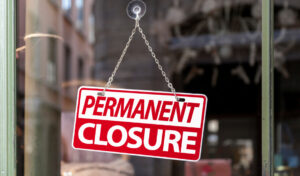
Customers Are Demanding Sustainability, So Does Your Organization Have a Plan?
From more eco-friendly packaging and shipping options, where does your company fall on the sustainability spectrum?
What does it mean for a retailer to be sustainable in 2022?
Does it simply mean using recyclable materials and longer-lasting light bulbs? The answer isn’t so simple.
“Sustainability is essentially a spectrum and not a singular object or answer,” Jack Kabic notes.
The first question to ask is, “Where does your brand want to be on the spectrum of sustainability? Once you can identify your sustainability message, finding a solution is significantly easier,” he continues.
Sustainability for businesses is commonly defined as operating without negatively impacting the environment, community, or society as a whole.
Investopedia classifies sustainability as having three main pillars: economic, environmental, and social. These three pillars are informally referred to as people, planet, and profits.
Why is retail sustainability important?
The United Nations points out that if the world’s population reaches 9.6 billion by the year 2050, we would require the equivalent of almost three planets to sustain current lifestyles.
A whopping 91% of packaging materials end up in landfills, and depending on what specific material it is, some of it sits there forever.
While consumers must also commit to making changes in their lifestyles to be more sustainable, the impact corporations can have are far more substantial.
Customer Demand Drives Retail Push for Sustainability
As consumers come to terms with climate change and are faced with these sobering projections about our environment’s future, it becomes clear that a shift is necessary. Current ways of production and waste cannot go on, and consumers are demanding change.
59% of consumers say they’ll boycott brands that don’t address the climate emergency via TheDrum.com
More and more consumers expect sustainability from the brands they support. Forbes references a study showing that 73% of consumers are willing to pay more for a product if they love the brand. People want to feel connected to the brands they choose, and their values need to align with their own.
It’s no longer enough to simply offer a great product, brands need to show strong values and integrity, and are subject to being judged they don’t.
Consumers Are Willing to Pay More for Sustainable Products
And people aren’t just talking about it. They’re willing to put their money where their values are.
A survey by CGS of 1,000 U.S. consumers found that almost 70% of respondents considered sustainability as at least “somewhat important” and almost half (47%) said that would pay 25% more for sustainable products.
Looking deeper into these numbers shows that younger generations are also more open to paying premium prices than earlier generations. A recent study sponsored by Business Wire showed 32% of Gen. Z and 31% of Millennials are willing to pay more for sustainable products, which is almost double the 14% of the Baby Boomer generation.
One-third of brands are distancing themselves from partners unwilling to meet their sustainability standards
Over a third of brands even reported that they are distancing themselves from partners that are unwilling to meet their sustainability standards, according to a recent Shopify study.
Partnering with brands that share a similar environmental pledge can make it easier to do business together. When you are aligned on values, standards, and goals, there. So what does this mean? Get on the pathway to sustainability or you may get left behind.
How can retailers be more sustainable?
As it’s been mentioned, retail is not by nature a sustainable sector, but there are a variety of opportunities for improvement. Some brands have the aggressive goal of net-zero emissions or becoming a zero-waste facility, but a commitment doesn’t need to be that strong for everyone. There is a broad range of possibilities and steps retailers can take to slowly become more sustainable. Small changes and incremental steps can eventually have big results.
Here are some common retail sustainability initiatives and ideas to consider implementing if your organization is not already doing so.
Sustainable Packaging for Retailers
Making the change to more environmentally-friendly packaging is one of the most impactful steps an organization can take in terms of sustainability.
An ideal sustainable retail package should be sourced responsibly, designed to be safe and effective, made from renewable energy, reusable within its lifetime, and recyclable at the end of its lifetime.
More specifically, this means that retailers should seek packaging made from innovative materials that utilize minimal fossil fuels in production and do not contain harmful substances.
Across all end-use segments, 60 to 70 percent of consumers said they would pay more for sustainable packaging specifically, according to McKinsey & Company.
If packaging can be reused or recycled, making that message clear is also crucial.
Is Recyclable Packaging the Same as Recycled Packaging?
No. Recyclable packaging means that the packaging can be recycled, but the packaging is still made from raw materials.
Recycled packaging implies that the packaging is made completely or partially from recycled materials. In terms of eco-friendliness, recycled packaging is better than recyclable packaging because it is more sustainable.
Lowered Damage Rates
Reducing the number of damaged goods reduces the amount of overall waste, which is always a positive step for the environment.
“The cost of damage claims is something businesses often don’t consider,” says Bunzl Business Development Director Dan Murphy. “Many underestimate the cost of damaged goods, returns, reshipments, and the negative effects on customer goodwill.”
The retail community must look at the big picture when it comes to lowering costs and operating more sustainably.
How can these damages be prevented? High-quality packaging makes all the difference. “A box is not a box is not a box. Quality matters.” Industrial packaging expert Dan Murphy continues.
Having a highly engineered packaging solution made with quality materials can help prevent damaged shipments.
Properly-sized boxes are another important factor. Shipping in smaller, more appropriate size boxes can not only prevent damages but is also more environmentally friendly.
Avoid Over-Packaging Throughout the Supply Chain
Working closely with a partner who can optimize your packaging and shipping can avoid unnecessary waste, and over-packaging throughout the process. They can simplify redundancies and help the process to be more turnkey and efficient.
Partner with Vendors Who Share Your Goals
Just as consumer demand must be met by B2C retailers, vendors need to respond to retailer demand. Source from vendors that carefully vet their partners and ensure they support eco-friendly goals, as well as fair pay and safe work environments.
Misconceptions Around Sustainability in Retail
“There are many misconceptions about sustainability, but it all starts with defining a sustainability goal,” says Kabic.
Some retailers may have the misconception that sustainable products will be more expensive but it varies highly on the material. Other cost variables to take into consideration are the money saved from damages or more efficient shipping.
Another misconception around sustainable packaging specifically may be that the appearance won’t be as impressive or unique visually, but as the CTC-Keenpac team will tell you, anything can be made possible.
“We have the ability to produce and provide solutions to meet our customers’ specific sustainability needs and requirements as it relates to their brand’s goals,” he adds.
Finding Your Place on the Sustainability Spectrum
“To some, replacing poly with paper is a sustainable solution that meets the brand needs, to others, they may require recycled content in the production of the finished product. There are still others that want the materials to be recyclable, which is challenging with many states having different levels of curbside collection, and still, there are others that may want a reusable bag to make their sustainability statement. Cost can be a deterrent to some packaging solutions, as each material comes at a different price point.
“Savvy retailers can often offset this by creating a profit driver with their new packaging along with added marketing opportunities to tell the story,” Kabic explains.
What is Bunzl Doing to Promote Sustainability?
“Our goal is for Bunzl to be seen as a socially and environmentally responsible organization that inspires and implements solutions that protect the environment.
“We’re working in partnership with customers, suppliers, and other stakeholders to provide sustainable solutions throughout the many Bunzl divisions. For Keenpac and CTC as a custom, branded solution to the retail market, our customers and their sustainability goals are significantly influential in our expanding sustainable solutions,” says Jack Kabic.
Where Should a Retailer Start on Their Path to Sustainability?
If you are a retailer who does not already use sustainable options, now is the time to start making a plan. The first step is to find your place on the spectrum of sustainability and identify your sustainability message.
“Where does your brand want to be on the spectrum of sustainability? Once you can identify your sustainability message, finding a solution is significantly easier,” Jack concludes.
Once a retailer has identified their sustainability goals, they can start looking into solutions and finding partners to help make reaching those sustainability goals easier.
Written April 7, 2022 by Bunzl Retail Services staff writers.




